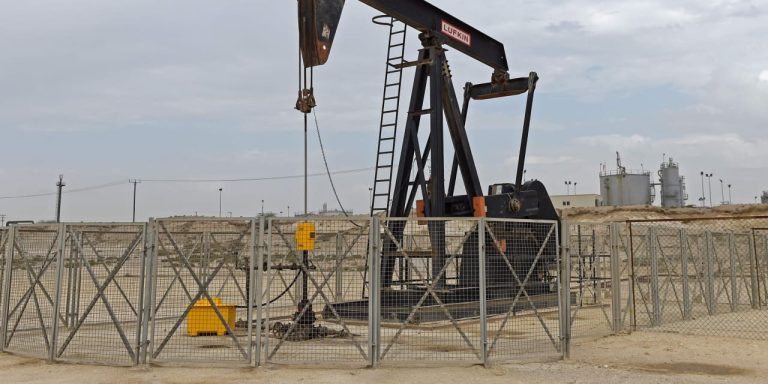Oil futures looked to post consecutive declines on Tuesday, as investors weighed the outlook for energy demand after China's leadership outlined its economic plans.
The price moves
-
WTI CL00
-1.07%
Futures for April delivery fell 68 cents, or 0.9%, to $78.06 a barrel on the New York Mercantile Exchange after losing 1.5% on Monday. -
Brent crude for May BRN00,
-1.09% Bank24,
-1.09% ,
The global index fell 67 cents, or 0.8%, to $82.13 a barrel on the ICE Futures Europe exchange after losing 0.9% the day before. -
april gasoline RBJ24,
-2.53%
fell 2.1% to $2.5309 a gallon, while April HOJ24 heating oil fell,
-1.64%
It fell 1.4% to $2.6091 per gallon. -
Natural gas delivery April NGJ24,
+1.20%
It traded at $1.938 per million British thermal units, up 1.2%, extending a 4.4% gain from Monday.
Market driving factors
Ipek Ozkardskaya, chief analyst at Swissquote Bank, said in a note that China's growth target is considered “ambitious,” noting that US crude “failed to continue its gains above $80 per barrel even after Chinese stimulus bets.”
China's official growth target for 2024 is about 5%, Chinese Premier Li Qiang said Tuesday in an annual report, as the country struggles to deal with a real estate crisis.
Li said the government plans to issue “special long-term treasury bonds” worth 1 trillion yuan (about $139 billion) in 2024 and over the next several years — a long-awaited additional promise of government spending to help support weak growth.
He added that the government also plans to provide support to local governments that are burdened with debt and facing “economic difficulties.”
“While oil appears to be disappointed by the Chinese news regarding growth targets, the reality is that it is very bullish,” Phil Flynn, chief market analyst at Price Futures Group, said in a daily report. “We expect demand in the US and the rest of the world to exceed expectations.”
He said that not only will we see record demand for oil, but “we will see an undersupplied market in the second half of the year.” “More and more the futures spread seems to be pointing to the same thing,” Flynn said, referring to the decline in futures. This refers to a situation where oil prices for delivery in the near future are higher than prices for later deliveries, indicating tight oil supplies.
Crude oil prices also faltered on Monday, failing to find support after OPEC+ extended voluntary production cuts by 2.2 million barrels per day in the second quarter.
“An oversupply in the second quarter should now be avoided. However, a further three-month extension was already expected,” Carsten Fritsch, commodities analyst at Commerzbank, said in a note.
—The Associated Press contributed.


